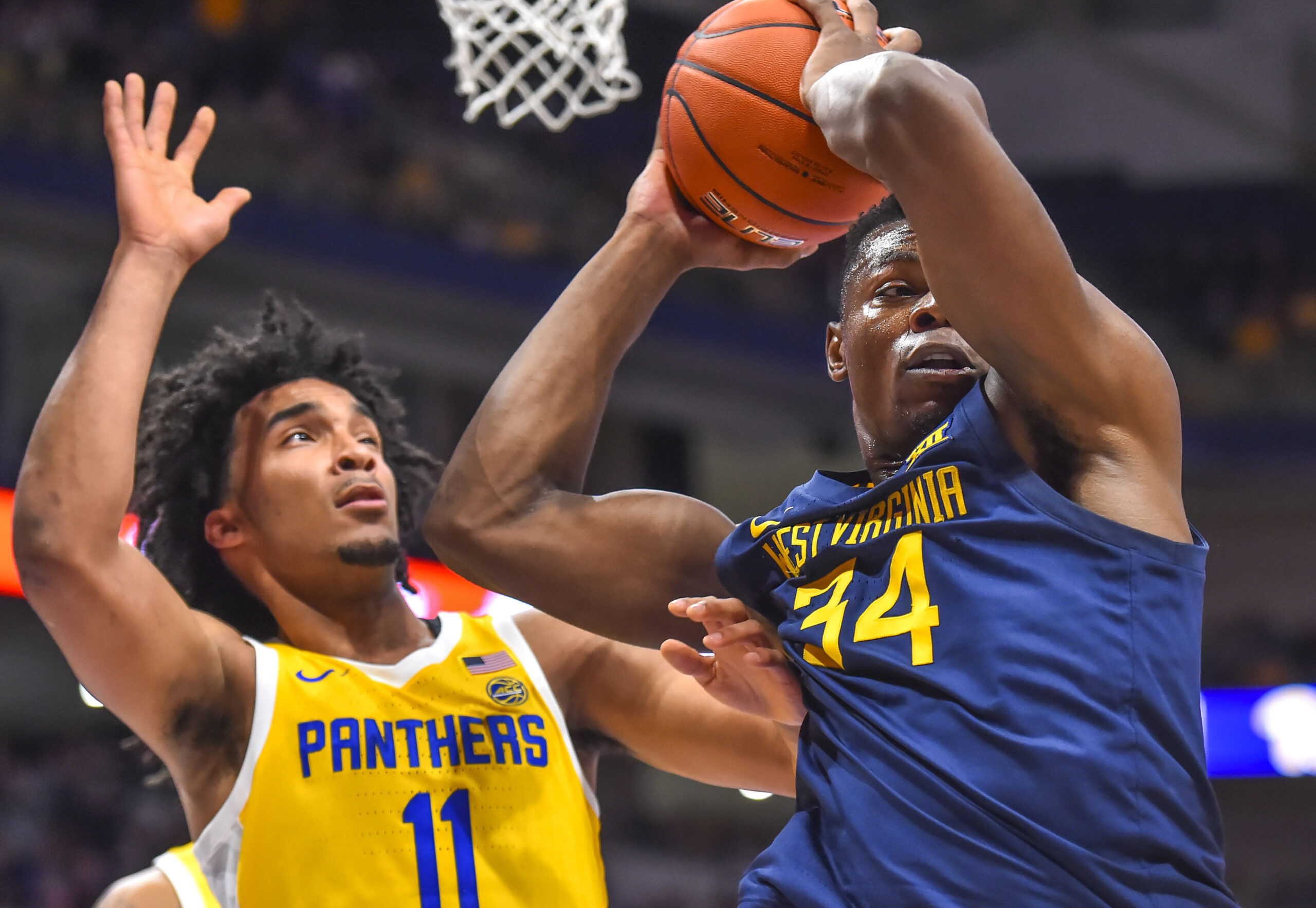MORGANTOWN, W. Va. — You stick around this business long enough and you’ll see some amazing things.
Not sure where this would actually rank on my list, but the attendance figure of 7,748 inside the Petersen Events Center for the West Virginia-Pitt men’s basketball game in 2017 has always stuck in my head.
That was the first game of the revival of the series of which the final game of the four-game series is scheduled Nov. 13 inside the WVU Coliseum.
What made it amazing? In an era where school’s attendance figures can be bloated sometimes beyond belief, that was maybe the first time I ever saw a school undersell its numbers.
Maybe Pitt officials only counted tickets purchased by its own fans, but the Pete’s official capacity is listed at 12,508, and there seemed to be close to 10,000 there that evening.
Granted a majority of them were decked out in WVU gear and I’ll never forget the loud boos that rang out through the arena for Pitt’s players and coaches during warm-ups and introductions.
That night sounded like anything but a home game for the Panthers, who finished 8-24 and fired coach Kevin Stallings after the season.
Nearly three years later, WVU athletic director Shane Lyons said he is in discussions with Pitt’s Heather Lyke to keep the series alive beyond next season.
“That is definitely on the list to extend the series with Pitt basketball,” Lyons said during a media teleconference last week.
We ask this question in a serious manner today: Minus the good fiscal sense the game makes, is this truly a good game for WVU to stay involved with?
There is no denying the economics. WVU can bus up and back to Pittsburgh, saving the school thousands in travel costs.
The close proximity of the schools is a blessing considering what the Mountaineers deal with during Big 12 play.
WVU fans want this game, too. The two games in Pittsburgh so far saw plenty of Mountaineers fans inside the Pete and the one game in the Coliseum — during the 2018-19 season — saw a season-high 13,670 fans.
That was just over a 1,000 more that came to the Kansas home game that season.
Hard to argue against any of that.
That is where the list of pros end, though, for WVU.
This is not the same Panthers’ program we grew up hating. Or the ones our fathers hated or their fathers, too.
In the 2018-19 season, both programs were virtually the same. Pitt finished 14-19, while WVU went 15-21.
Heading into next season, WVU is projected as a preseason top 20 team. Pitt is not.
West Virginia is scheduled to have four starters back. Pitt lost two of its key players — Ryan Murphy and Trey McGowens — to the transfer portal.
A WVU victory in November would mean a five-game winning streak in the series, something that hasn’t been experienced in Morgantown since the 1960s.
The last time WVU lost to Pitt, forward Derek Culver was in the sixth grade.
Normally that would be something to stand up and brag about for those involved with the Mountaineers, but these are not normal times and this is not a normal Pitt men’s basketball program.
There is no guarantee Pitt is going to vastly improve under Jeff Capel. From his first season to his second, there was little, if no improvement.
If it was any other team not named Pitt that was hanging around the bottom of the ACC standings, WVU officials wouldn’t be pushing to keep that team on its schedule.
Why? Because it certainly doesn’t help the Mountaineers’ strength of schedule.
Pitt finished ranked No. 109 in the NCAA’s NET rankings this season. That was 10 spots below Kansas State, which was by far the worst team in the Big 12.
Lose to a team like that and credibility gets shot, much like how WVU took a black eye after losing at Kansas State.
Beat a team like that and it really does nothing to help you outside of the obvious fiscal bottom line when it comes to Pitt.
Money talks, I get it. But if the first three years of the revival has proven anything it’s that this isn’t the rivalry we all hoped for back in 2016 when it was first signed.
WVU’s players don’t know Pitt’s players like they used to. They certainly haven’t developed any sort of hatred for them.
Capel and WVU head coach Bob Huggins probably don’t bump heads in recruiting nearly as much as Huggins did with Jamie Dixon when both schools were in the old Big East.
If the Panthers don’t become more competitive, say over the course of another four-year deal, what will become of the state of this “rivalry?”
Sooner or later, even the die-hard WVU fans will at least lose some interest. Judging by Pitt’s fan base over the first two games of this series at the Pete, they’ve already lost interest.
No doubt that it’s difficult for Lyons not to look past the economics and logistical sense another deal with Pitt makes. It would be hard for any athletic director.
If the rationale, though, is to truly make this a rivalry of national interest again, it wouldn’t hurt for both schools to pump the brakes a bit and wait a few years to make another deal.
TWEET @bigjax3211




